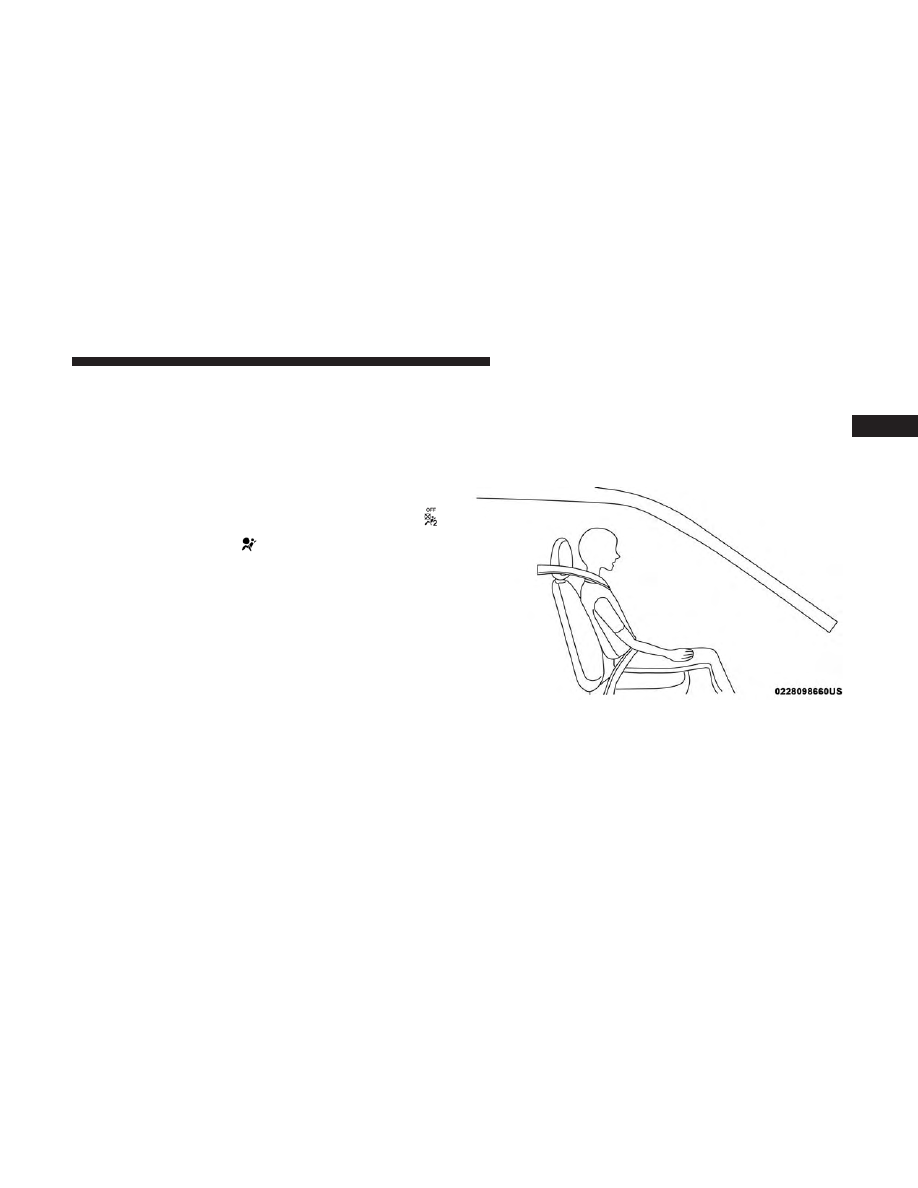Dodge Viper (2017 year). Manual - part 3

The Occupant Classification System (Ocs) Consists Of
The Following:
• Occupant Restraint Controller (ORC)
• Occupant Classification Module (OCM) and Sensor lo-
cated in the front passenger seat
• Passenger Air Bag Disabled (PAD) Indicator Light – an
amber light located in the center of the instrument panel
• Air Bag Warning Light
Occupant Classification Module (OCM) And Sensor
The Occupant Classification Module (OCM) is located
underneath the front passenger seat. The Sensor is located
beneath the passenger seat cushion foam. Any weight on
the seat will be sensed by the Sensor. The OCM uses input
from the Sensor to determine the front passenger’s most
probable classification. The OCM communicates this infor-
mation to the ORC. The ORC uses the classification to
determine whether it should activate or deactivate the
Passenger Advanced Front Air Bag. In order for the OCS to
operate as designed, it is important for the front passenger
to be seated properly and properly wearing the seat belt.
Properly seated passengers are:
• Sitting upright.
• Facing forward.
• Sitting in the center of the seat with their feet comfort-
ably on or near the floor.
• Sitting with their back against the seat back and the seat
back in an upright position.
The OCS may deactivate the deployment of the Passenger
Advanced Front Air Bag if the OCS estimates that:
• The front passenger seat is unoccupied or has very light
objects in it.
Seated Properly
2
THINGS TO KNOW BEFORE STARTING YOUR VEHICLE
41